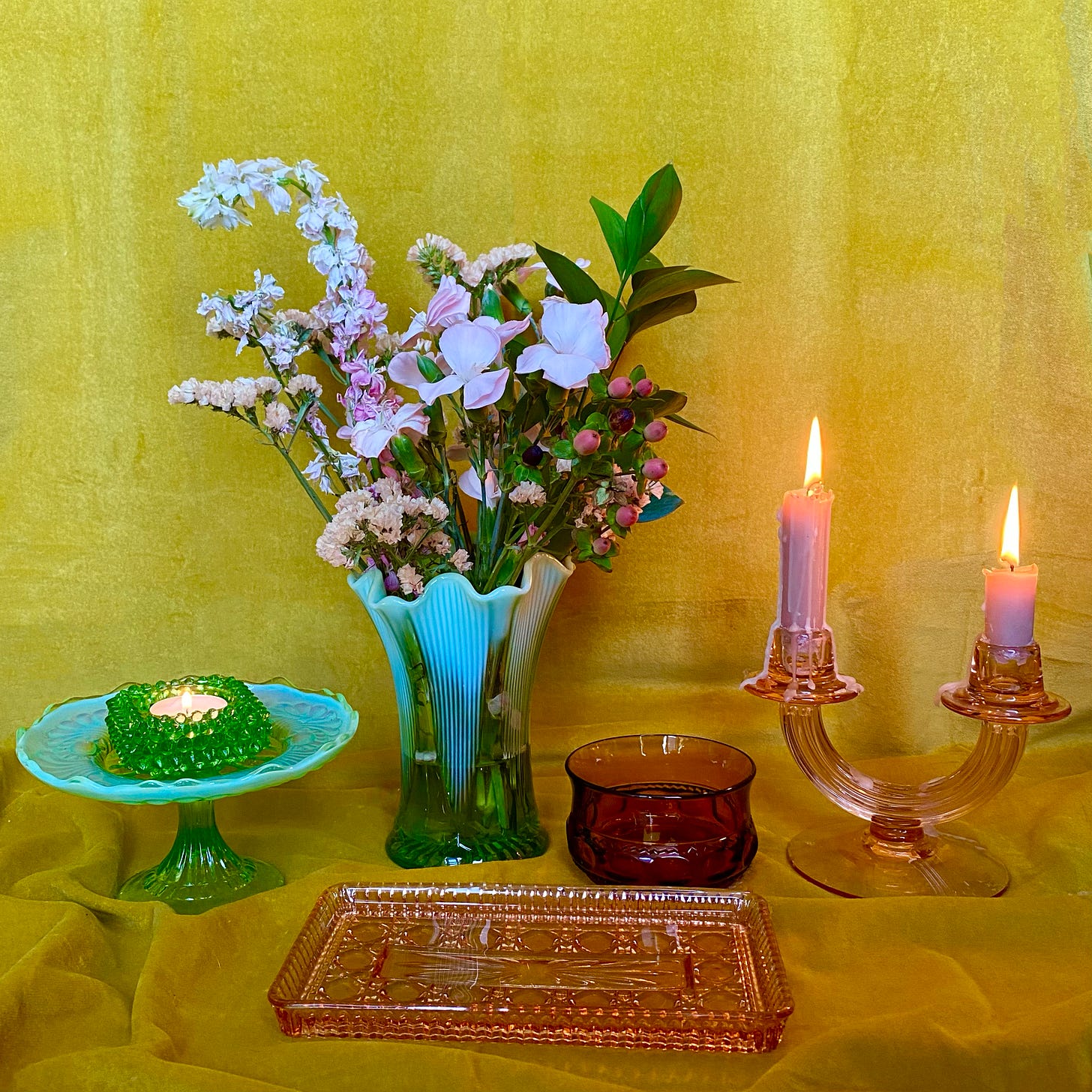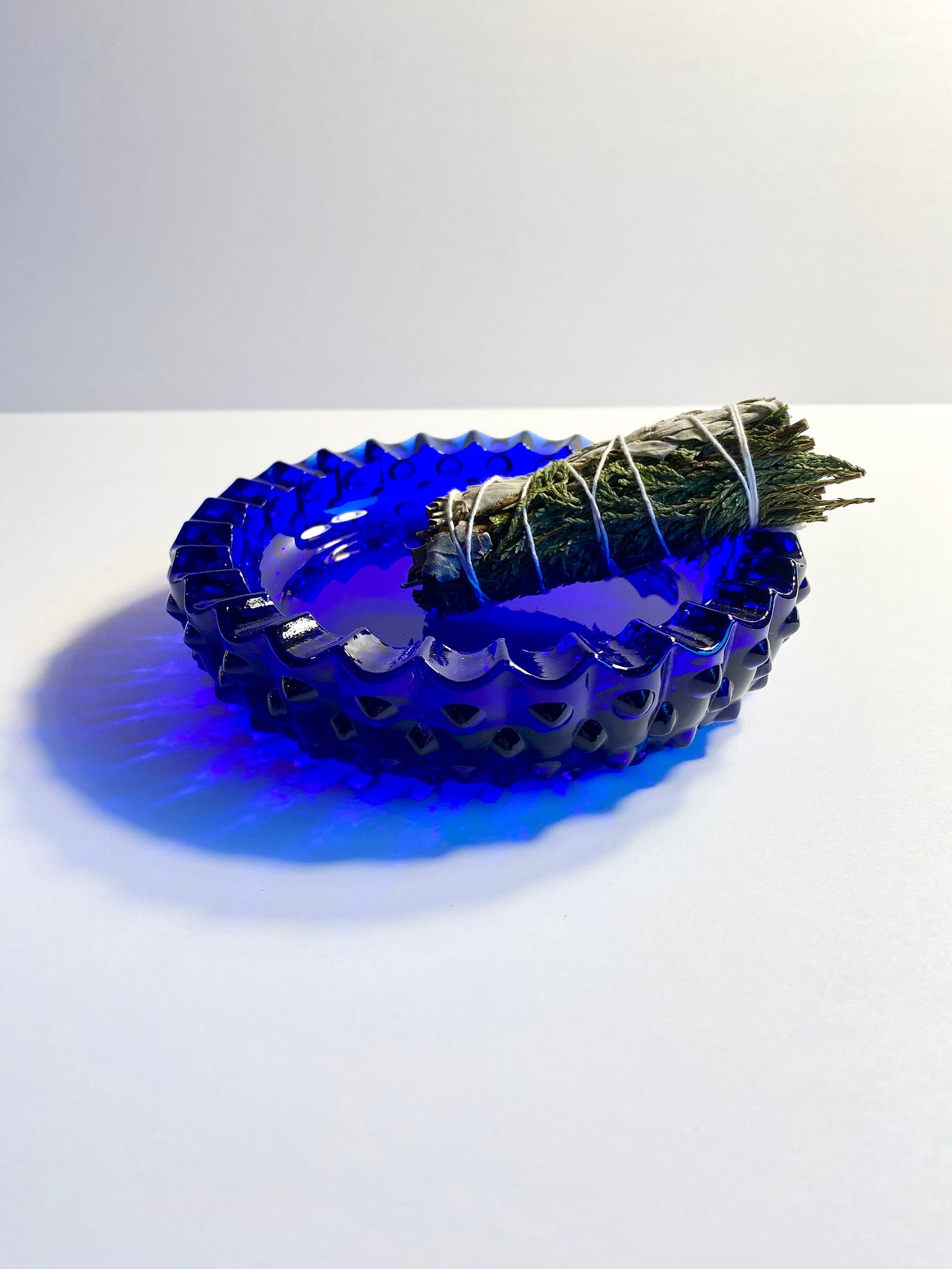Fun, vintage glass is a perfect example of Zhuzh’s tagline, “Elevate Your Everyday.” These dining sets are inexpensive, easy to find secondhand, unique, and joyfully hued. It’s hard to be grumpy while eating off of a baby pink, exquisitely patterned plate.
Here is a little glassware history to chew on, in addition to some places to find pieces of your very own:
At the turn of the 20th century, in the years preceding the stock market crash, fine crystal plates and cups were a popular status symbol. Factories soon caught on to the trend, and companies like Anchor-Hocking and Jeannette began to mass-produce sets of similarly patterned pieces in an array of candy colors. After the crash, when most luxuries were forgone, the cheap, accessible, beautiful pieces grew in popularity. Hence the name “Depression glass,” which applies to factory-made colored glass pieces produced through the 1950s.
There are a few varieties of colored glass worth noting that deviate from the standard translucent, colorful Depression-era pieces:
Carnival Glass

Carnival glass slightly pre-dates Depression glass, becoming popular in the early 1900s and reaching its production peak in the 1920s. This type of glassware has a iridescent glaze that distinguishes it from similarly patterned pieces. The name “carnival glass” came about because the pieces weren’t considered valuable and were commonly used as prizes at carnivals.
Take a deeper dive into carnival glass here.
Milk Glass

Milk glass is opaque glass, often white, blue, pink, or jade green. The technique dates back to the Venetian glassblowers of the 1500s, who made glass opaque with the addition of calcifying elements like bone and ash. The glass has remained in popular everyday use because of its durability, enjoying a particularly strong revival in the 1950s. Variations of the style include a transparent layer of glass or an opalescent halo around the edge of a piece.
Take a deeper dive into milk glass here.
Hobnail Glass
Riffing on the popular “dewdrop” glass of the Victorian period, glassware company Fenton introduced its Hobnail pattern on clear glass in 1939 and on milk glass in 1952. Named for the hobnail studs used to give work boots traction, the pattern of uniform bumps became Fenton’s most popular (and replicated) pattern.
Take a deeper dive into hobnail glass here.
Want to find some vintage glass of your own? Here are a few purveyors around D.C. that often have colored glassware for sale:
Mosser Glass also currently produces gorgeously patterned colored glassware. You can buy from them directly or find a small selection at Salt and Sundry.
Want to learn even more about vintage glass? Gene Florence is your guy. He’s written myriad collectors’ guidebooks on the subject.
Until next time,
Elizabeth
This newsletter is just one facet of Zhuzh, my platform dedicated to conscious consumption and making space for delight. I offer secondhand-and-vintage-based wardrobe and interior styling services, art curation, and super chill life coaching. Keep up with me on Instagram and learn more at www.zhuzhlife.com.





